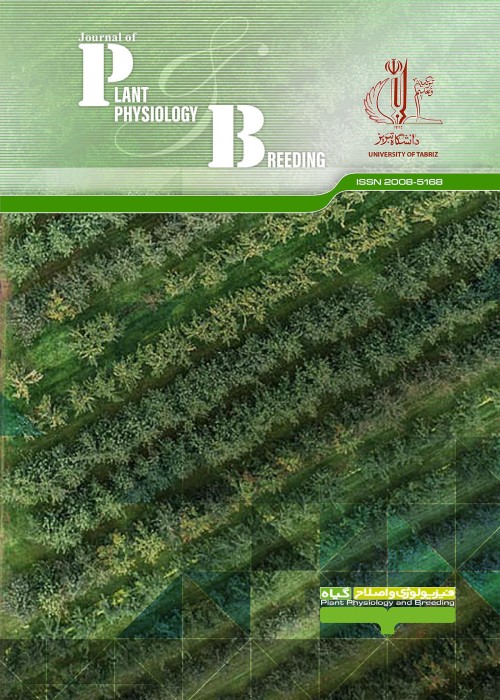Chlorophyll a fluorescence of common cocklebur (Xanthium strumarium L.) in response to Lumax herbicide with and without almond oil
Author(s):
Article Type:
Research/Original Article (دارای رتبه معتبر)
Abstract:
Chlorophyll a fluorescence measurement is a useful tool for studying the herbicides' effects with different modes of action on the photosynthetic apparatus. In this research, the chlorophyll a fluorescence response of common cocklebur (Xanthium strumarium L.) plants was studied two days after the sole application of different doses of the Lumax herbicide (s-metolachlor + mesotrione + terbuthylazine), and combined with the almond oil. The quantum yield of energy dissipation (F0/Fm) and minimum fluorescence (F0) values of the plants treated with the 100% herbicide dose increased significantly from 0.16 to 0.25 and 296 to 391, respectively, two days after treatment. These changes in PSII resulted in the reduction of the maximum quantum yield of PSII (Fv/Fm) and the PSII function index (PIABS). Moreover, the application of high doses of the herbicide decreased the variable fluorescence (Fv), the maximum fluorescence (Fm), the size of the plastoquinone pool on the reducing side of photosystem II (Area), the maximum efficiency of water-splitting complex on the donor side of the photosystem II (Fv/F0), the energy needed for the closure of reaction centers (Sm), and the intermediate redox state of quinone A in the period from F0 to Fm. Our study revealed that the use of almond oil with the Lumax herbicide caused further reduction of the chlorophyll a fluorescence parameters in common cocklebur. The correlation between dry weight taken 28 days after the herbicide application and Fv/Fm measured two days after the herbicide application showed that assessing the chlorophyll a fluorescence parameters can speed up the rate of herbicide performance evaluation up to 12 times. The steeper slope of the regression line for herbicide with almond oil compared to the herbicide alone showed that almond oil could be a proper adjuvant to increase the herbicide efficiency.
Keywords:
Language:
English
Published:
Journal of Plant Physiology and Breeding, Volume:12 Issue: 1, Winter-Spring 2022
Pages:
29 to 38
magiran.com/p2573246
دانلود و مطالعه متن این مقاله با یکی از روشهای زیر امکان پذیر است:
اشتراک شخصی
با عضویت و پرداخت آنلاین حق اشتراک یکساله به مبلغ 1,390,000ريال میتوانید 70 عنوان مطلب دانلود کنید!
اشتراک سازمانی
به کتابخانه دانشگاه یا محل کار خود پیشنهاد کنید تا اشتراک سازمانی این پایگاه را برای دسترسی نامحدود همه کاربران به متن مطالب تهیه نمایند!
توجه!
- حق عضویت دریافتی صرف حمایت از نشریات عضو و نگهداری، تکمیل و توسعه مگیران میشود.
- پرداخت حق اشتراک و دانلود مقالات اجازه بازنشر آن در سایر رسانههای چاپی و دیجیتال را به کاربر نمیدهد.
In order to view content subscription is required
Personal subscription
Subscribe magiran.com for 70 € euros via PayPal and download 70 articles during a year.
Organization subscription
Please contact us to subscribe your university or library for unlimited access!


